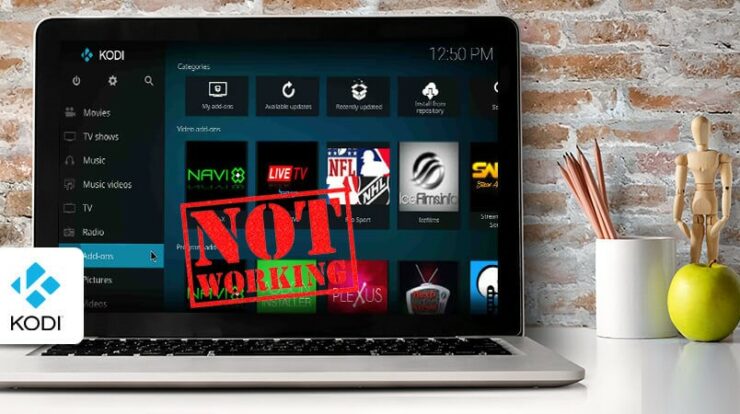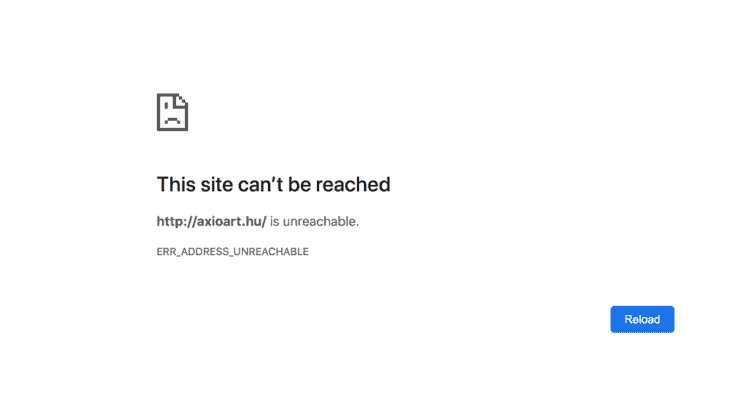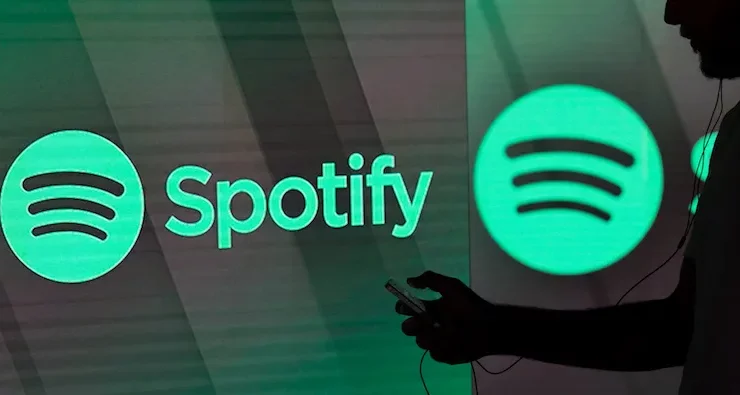
Isn’t Kodi working? Do you have difficulties starting or installing the app? Also, maybe Kodi buffers too-long video files? Well, no matter what technological problem you see, you’re at the proper place!
First, you should know that our publishing crew has been using Kodi daily for several years now. We have a fair number of problems because we like to get into this application and push its limitations.
In other words, you may be confident we know how to solve Kodi’s problems. So let’s begin to speak about what to do if Kodi doesn’t. As you can observe from the following table of contents, we will go over a lot.
[lwptoc]
How to Fix 12 Common Kodi Issues Easily
So let’s move to what we want to know without further ado. What can you do if Kodi doesn’t work – together with a wealth of plausible solutions?
1. Kodi Fails to Start-Crashes on Startup
We have prepared two solutions to this problem, which luckily doesn’t happen too often. Here is what to do when Kodi crashes on startup & refuses to launch.
- Fix 1: Download latest Visual C++ Redistributable
If you have bought a new Windows PC recently or have newly installed a fresh copy of Windows, Kodi can sometimes fail to launch.
This app crashes on startup without showing you an exact error message. Hence, here’s an easy fix for this problem.
So, In many cases, installing the latest Visual C++ redistributable resolves this issue. It is interesting to note that Kodi should check for any missing files on your system during the installation – but this doesn’t always happen.
Therefore, go to Microsoft’s website and download the latest update from there.
- Fix 2: Update Kodi to Latest Available Version
With every new update, Kodi receives plenty of bug fixes, meaning there’s always a chance that the bug you’re encountering has been fixed in the meantime.
Thus, here is how to update Kodi to the latest available version.
- Start with Visit the download section on Kodi’s official website. Now, Select your operating system under the ‘Choose Your Weapon’ section.
- Then, Pick the ‘Recommended’ tab and download Kodi’s installation file.
- Next, In some cases, if you fail to fix the issue, you can try via the ‘Pre Release’ tab, where you can download a beta Kodi version.
- Here, reinstall App on your device. Remember that you shouldn’t remove the existing Kodi installation to keep your media library intact. Reinstall Kodi, and now it will automatically patch any applicable files.
2. Kodi Is Pausing, Freezing, or Crashing Frequently
There are several feasible reasons why Kodi might be misbehaving. Therefore, here is what to do when Kodi stops working – by freezing when launched or if the app crashes.
- Fix 1: Clear Kodi’s Cache Files
Here Kodi’s cached data can include everything from files, scripts, images up to other media stored on your device. These are typically the files you access pretty often, which helps the application improve its performance. But, if there’s a problem with the cache, this will force Kodi to crash.
So, What you need to do in this case is to clear Kodi’s cache files. Now, Click on the provided link to learn how that’s done by using a third-party addon called Indigo.
Next, Indigo is a hugely influential maintenance addon that can resolve numerous issues, and we highly recommend using it.
- Fix 2: Disable Hardware Acceleration
The problem is more present on Android devices, which is why we recommend you disable hardware acceleration if you have any Android-based device, including a range of TV set-top boxes.
Therefore, make sure to move through the following steps.
Kodi Settings Hardware Acceleration
- First, Launch Kodi on your device.
- Move to Settings by clicking on the cogwheel-shaped icon (top-left corner).
- Then, Click on the ‘Player’ button on the left side of the screen. So, If you have an older Kodi version, this option should be named ‘Player Settings.’
- Next, click on the gear icon (bottom-left corner) until it says ‘Expert.’ On the right side of the screen, you’ll see an option that says: ‘Allow Hardware Acceleration.’
- Here, Make sure to disable hardware acceleration by clicking on the ON/OFF switch on the right. To apply this change, you will need to restart Kodi.
3. Kodi Shows’ Failed to Install a Dependency Error
Kodi addons rely on Several types of dependencies to work. For Instance, we have Web scrapers searching the Internet for media streaming links. Well, If the scraper doesn’t work, the addon won’t work either.
Here, let’s talk about how to resolve this. Now, You will find all you need to know in our article on resolving Kodi’s dependency-related issues. Also, More precisely, we have decided to show you the three most effective solutions to this error, so make sure to Tap on the provided link.
4. Kodi Shows’ Unable to Create Application’ Error
In Several cases, updating your Kodi to the latest available version can cause specific issues when Kodi stops working.
So, When it comes to other solutions to the ‘Unable to Create Application’ error, here’s what to do if this happens on a Windows PC.
Kodi Profiles XML File
- Head to My Computer on your PC.
- Then, make sure that you can see hidden files. That is done (on Windows 10) by clicking on the ‘View’ tab and then selecting ‘Hidden Items.’
- Next, go to C: > Users > Your Username > App Data > Roaming.
- Here, go to Kodi > Userdata.
- Now, This is where you’ll find a file named profiles.xml. Delete the file.
- Finally, restart your PC and launch Kodi. The app will create a new ‘profiles.xml’ file, and it should start successfully.
5. Kodi Fails to the Connect to a Source
As well, Every time you want to add an external source (when trying to install an addon, for example), you must add a URL. Suppose Kodi fails to open/find that URL, you will see a notification saying it can’t connect to the source.
- Here is what to fix this Kodi problem.
- Start, make sure that you’ve entered the URL correctly.
- Then, check if the URL you’re trying to use begins with ‘HTTP’ or ‘HTTPS’ and check for any uppercase or lowercase letters.
- Next, The repository might be offline if you’re 100% sure that you’ve entered the URL correctly. In this case, try installing some other addon from a different source.
6. Kodi Add-ons Fail to Play Stream a Video
If In case you can’t access video streams after installing an addon, we suggest two options. First, then, update your addon to the latest version. Second, if that doesn’t help, try using a VPN.
- Fix 1: Update Your Kodi Addons
Keeping your Kodi addons updated is essential. It is even more critical for unstable or newly released addons, which require a few updates to eliminate issues.
With that said, here is how to manually update Kodi addons.
- Firstly, Open Kodi and navigate to the Add-ons section.
- Then, go to Video Add-ons, where you’ll find the addon you are looking for.
- Next, Once you find it, right-click on its icon and pick ‘Information.’
- Lately, click on the ‘Update’ button to manually check for a newer version.
- Fix 2: Utilize a VPN to Unblock Geo-Restricted Content
In Various cases, fixes for Kodi-related problems might be out of your reach. Kodi is usually associated with piracy, which forces certain (Internet Service Providers) ISPs to block or throttle Kodi-related traffic.
Well, This usually produces problems with buffering, that makes streaming video files close to impossible.
The reliable way to solve this issue is by using a VPN app. These are pretty technical yet easy-to-use solutions that encrypt your Web traffic.
So, By being encrypted, your traffic can’t be throttled by anyone, including your ISP. Also, you will get to use Kodi addons that are not available in your country due to geo-restrictions.
However, Since VPNs are subscription-based, you need to research before deciding which one to use. The Best place to start is our in-depth overview of the best VPN for Kodi. That is where you will see that we strongly recommend subscribing to ExpressVPN – which is genuinely the best VPN right now, suitable for the majority of Kodi users.
7. Kodi Addons Fail to Return Any Search Results
Kodi won’t be capable of searching for files if the date and time of the application/device aren’t set correctly. So, This causes issues with individual addons, especially those that list entries based on dates.
Accordingly, to resolve this problem, you need to check your device. That can be a computer, a media streaming device, or a TV set-top box. Here, Double-check if the date and time are correctly set.
8. Kodi Fails or Refuses to Uninstall an Addon
In many cases, Kodi will present a series of errors that prevent you from uninstalling individual addons. Thus, here is what you need to do.
- Fix 1: Delete Kodi Add-ons – The Right Way!
Now, At times, faulty add-ons can force your Kodi to crash. So, When that happens, you need to remove recently installed addons. There are different ways to do this, with the easiest one being from Kodi’s interface.
- Fix 2: Delete Kodi’s ‘Add-ons27.db’ Database File
Suppose you’re experiencing problems related to Kodi’s black screen or blank screen issues. In that case, you can resolve these by deleting a file named ‘Addons27.db.’ It’s also important to note that this issue usually happens when updating Kodi to a significant new version.
This solution deletes a file called ‘Addons27.db,’ containing cached data about your installed addons. Of course, you won’t remove any addons this way, as the file will be automatically generated the next time you launch Kodi.
Hence, here is how to find and delete this file.
- Windows: Paste here, the following path to your Windows Explorer’s navigation path: %AppData%KodiuserdataDatabase.
- MacOS: Move to Users > Your Username > Library > Application Support > Kodi > Userdata > Database.
- Linux: Head to ~ > Kodi > Userdata > Database.
- Android: Navigate utilizing a File Manager to Android > data > orgkodi > files > kodi > userdata > Database.
- iOS: Move to private > var > mobile > Library > Preferences > Kodi > Userdata > Database.
- OpenElec/LibreElec: Now, Navigate to storage > kodi > userdata > Database.
So, Once you open the ‘Database’ folder, delete the ‘Addons27.db’ file. There is no need to restart your device; open Kodi. This file will be created from scratch, potentially resolving Kodi-related blank screen issues.
9. Kodi Repository Not Working Issue
Here, You need to know that Kodi addons rely on remote servers. Even though they are installed locally, they need an Internet connection to work. Suppose something happens to those servers. The addon will stop working.
In common, Kodi addons can be pretty unreliable, especially unofficial ones. That is because they depend on their developers, who spend quite a lot of time maintaining their addons.
Well, when you find a non-working addon or repository, we suggest you move to a new one. There are many addons on the Web, and we are sure you will find an alternative.
10. Kodi Video Take Too Long to Buffer
Here is what to do if you are experiencing playback issues with your Kodi. We have prepared several handy solutions for you.
- Fix 1: Fine-Tune Kodi’s ‘AdvancedSettings’ File
Even though Kodi is a lightweight app, you can designate more resources to help the application run even better.
It is done via an XML file that you need to create and place within your ‘User Data folder. We will tell you how to create that file, put it and make Kodi more powerful.
This first step is to create a new file with the XML extension in your User Data folder.
Here is how to locate Kodi’s ‘User Data’ folder on different operating systems:
- Windows: First, Open the Run command by pressing the Windows Key + R. Paste the following code: ‘%APPDATA%roamingkodiuserdata.’ Press Enter, and you will see the corresponding directory. You can use the provided navigation path by launching the Start menu in Windows 10 and pasting it.
- Mac: Move to /Users/<your_user_name>/Library/Application Support/Kodi/userdata/.
- Linux: Go to ~/.kodi/userdata/.
- Android: Now, Use a File Manager and go to this directory: Android/data/org.xbmc.kodi/files/.kodi/userdata/.
- iOS: Hre, Use a File Manager and open the following directory: /private/var/mobile/Library/Preferences/Kodi/userdata/.
Once you have found the directory, create a new file and name it ‘advancedsettings.xml.’ It is done by creating a new text file and making sure you are using the XML extension.
Now, Using the image placed above, you can see the final look of the Advanced Settings file. Here, Please note that the blue-colored text must be recognized as you see in the image.
This white text presents variations you can use, depending on your device’s specifications. This green-colored text refers to explanations for what each of the available commands can do.
So, To help you understand what each of the commands is used for, we’ll take a closer look at every one of them:
- <memorysize> It is a command used to tell Kodi how many bytes to use. In Common, you can use up to one-third of your free RAM and dedicate it to Kodi. But, make sure to calculate that number in bytes. You can Utilize this Online Converter to convert units.
- <buffermode> It is a setting that defines the types of content allowed to be buffered. For Instance, you can instruct only to buffer locally stored content or buffer any file. ‘0’ is used to be buffer all internet streams, and ‘1’ is used to ease anything compatible with Kodi, while ‘2’ is used to soften Internet-based filesystems.
- <readfactor> It is how tries to read a video file. Suppose you have a powerful processor. You can take advantage of that. This default value is 4.0. You can also double it if you have a CPU that is above mid-range.
Here, Once you have entered the new values, save your file. Now, Again, make sure the file has the XML extension. That is all you need to know. Kodi will do the rest.
- Fix 2: Take Advantage of Real-Debrid
So, The truth is that addons act as repositories of links to media files. For Instance, isn’t served from a particular addon’s server when you start streaming a movie. Alternatively, that addon is using a link found on the Web to help you stream the content.
Well, Real-Debrid solves this issue by letting you download and stream media files as fast as your Internet connection allows. Even Though if a download gets interrupted, you can resume downloading the file at a later time.
Nevertheless, you need to know what addons support this service.
11. Kodi Can’t Play 4Kor HD Video Files
So, Playing 4K files requires you to have a capable machine running Kodi. That is why we recommend you check whether your device is capable of playing 4K files.
You should know that Kodi comes preloaded on several custom-made Android TV boxes. But, of course, we are talking about Kodi boxes here, which are usually quite affordable.
In Common, all of those can play HD Video files (720p or 1080p). But, you will see that only a limited selection of Kodi boxes can play/stream 4K titles.
12. Kodi Black Screen When Playing Videos
We have received reports of users experiencing a black screen when trying to play videos. So, Upon further investigation, our team has discovered three possible solutions to this problem.
Well, interestingly enough, we already wrote about those solutions – found in this article. Here, We first recommend removing the ‘Addons27’ file. Then, you can clear Kodi’s cache. And Lastly, try updating Kodi to the latest version.
Final Thought:
We have reached the end of our ‘Kodi Not Working’ guide, and we hope you have managed to find a solution that works. So, In case you have any questions, don’t hesitate to post a comment below, and our editorial team will respond as soon as possible.


